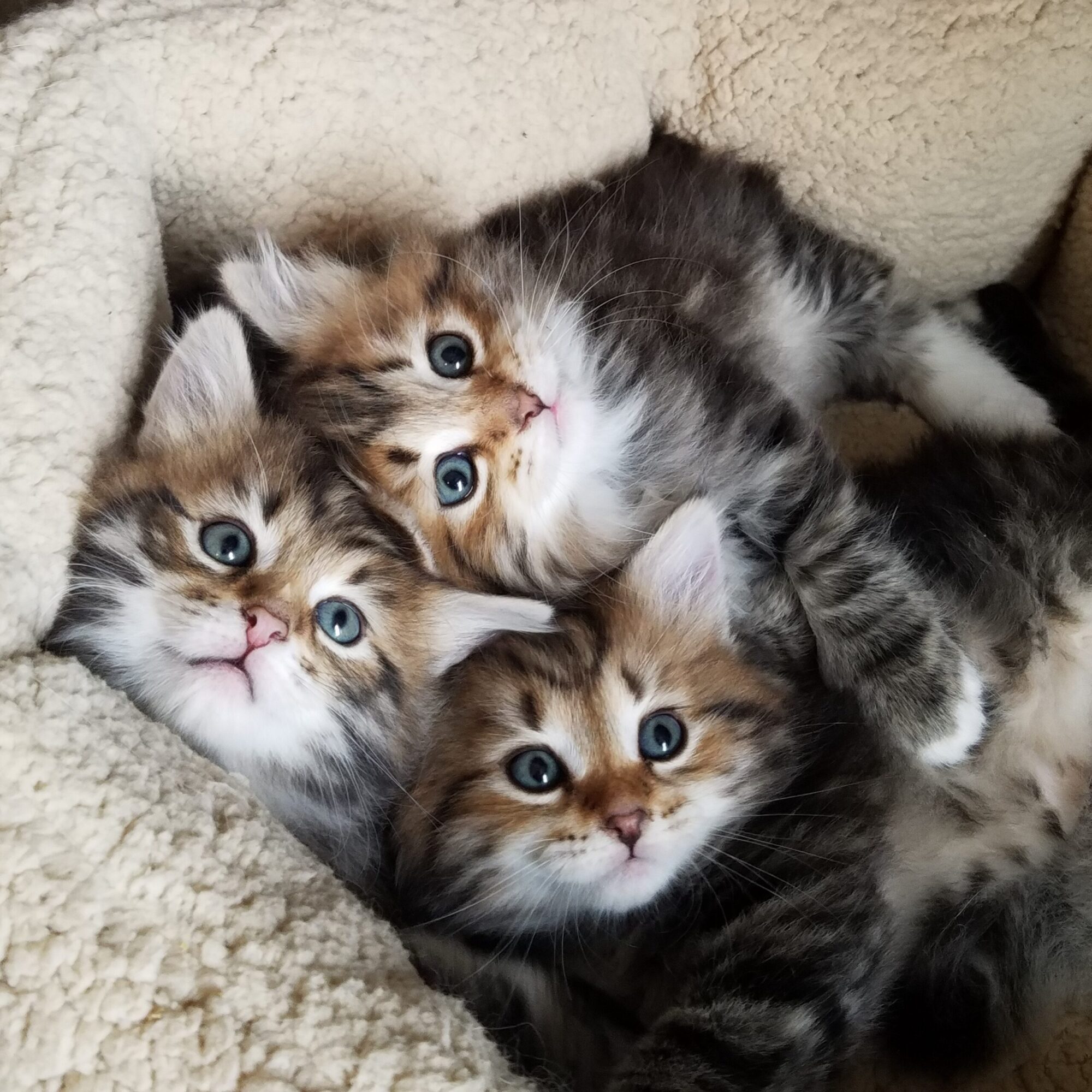We begin socializing our kittens on Day One. By handling and talking to them regularly, their exposure to humans is familiar and positive from the very beginning.
After a couple weeks in their nesting box with Mom in a separate room from the rest of our cats, we bring the box out into The Corral in our living room. Here we can interact with them more easily; they become more familiar with the sounds of typical household activities and members; and Mom gets to reenter the feline society of her fellow queens.
By week three or four, the kittens are ready to step outside the nesting box and explore The Corral. The hardwood floor helps strengthen their legs (think learning to ice skate); they can interact with our other cats & kittens outside The Corral; and they can approach us instead of the other way around, if they’re so inclined. After a week or two, once they’re using the litter box reliably, the nesting box is replaced with an assortment of cushions, scratching posts, and other toys.
Around seven or eight weeks, the kittens are big and strong enough to start climbing right out of The Corral and explore the rest of the house, which we refer to as “graduation”. They can come and go as they please, but they invariably find other fun places in the house to hang out. This transition to a human habitat, and its near-constant interaction with people, is where we start to see their personalities emerge and develop.
At twelve to thirteen weeks, the kittens have their health certificates and are ready to go to their new homes! It’s a big transition and needs to happen gradually, but by this time they’re well prepared for their new life in a loving home. Yes, we’ll miss them—but the way we look at it, we’re training them to make their eventual families happy. Besides, we know there will be more!
